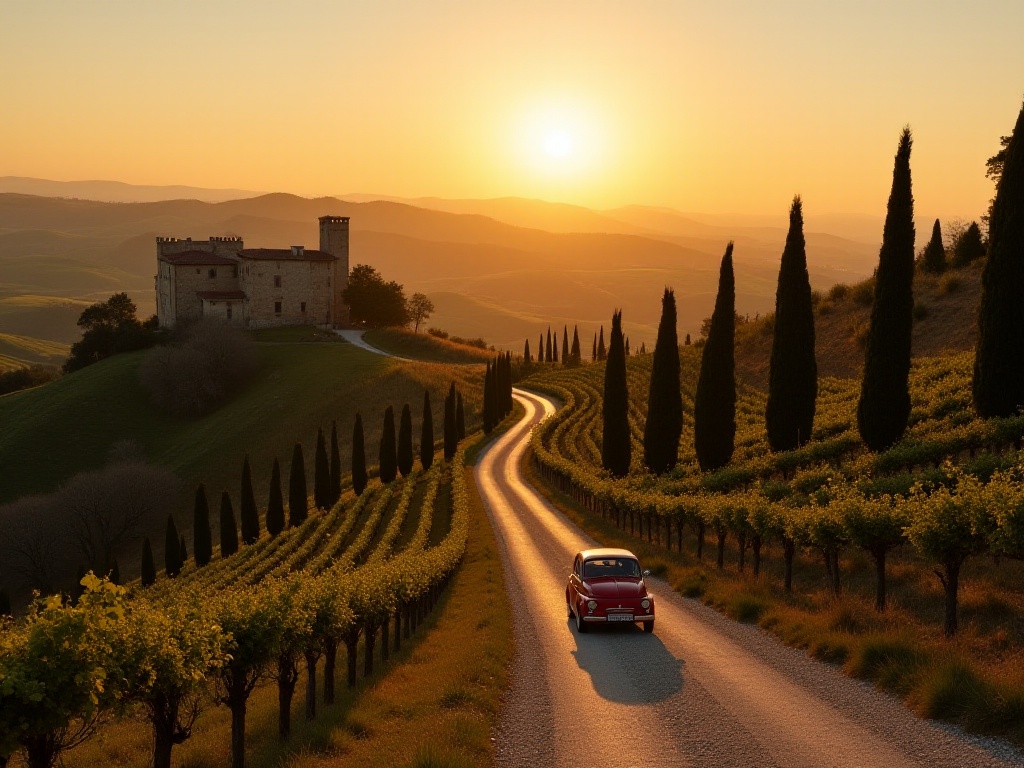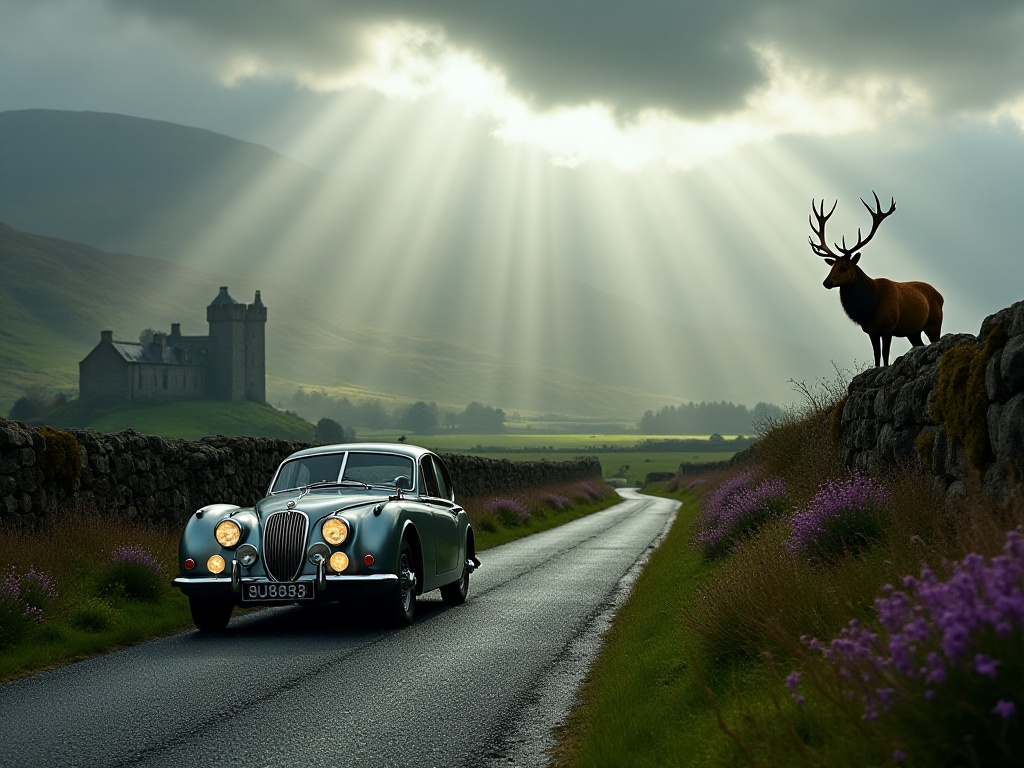The Beginning
Have you ever dreamed of taking off on a spontaneous journey? After years of traveling experiences, I finally realized one of my dreams last fall - driving along US Route 66 from Chicago westward to Santa Monica Beach in California. This legendary highway, known as the "Mother Road," has witnessed nearly a century of American transformation and carries countless dreams and stories.
Today, let me take you through this unforgettable journey. I believe after reading this article, you'll develop a deep interest in this legendary road.
Finding the Way
Route 66 spans approximately 3,940 kilometers across eight US states. Starting from Chicago, Illinois, it passes through Missouri, Kansas, Oklahoma, Texas, New Mexico, Arizona, and finally reaches Los Angeles, California.
I discovered during my pre-trip research that this road, built in 1926, officially disappeared from maps in 1985. However, its spirit and legacy never vanished but became more precious with time. Today's Route 66 is actually a combination of several modern highways, and you need to watch carefully for "Historic Route 66" signs along the way.
Preparation
To fully experience Route 66, I recommend setting aside at least two weeks. I planned a 15-day trip, which wasn't too rushed and allowed plenty of time to appreciate the scenery and culture along the way.
Regarding car rental, I suggest choosing an American muscle car or convertible to truly experience American road culture. I rented a Ford Mustang convertible for $89 per day. Though not cheap, it was worth every penny. Remember to obtain an international driver's license in advance and purchase adequate insurance.
Starting Point
Chicago, the Windy City, marks the beginning of Route 66. At the starting sign on Michigan Avenue, I met travelers from around the world taking photos with a pilgrimage-like enthusiasm. I suggest departing early morning to avoid Chicago's rush hour while enjoying the city's awakening beauty.
Worth mentioning is Lou Mitchell's Restaurant, a must-visit spot in Chicago. Open since 1923, this restaurant witnessed Route 66's birth and prosperity. Their signature blueberry pancakes and handmade milkshakes still maintain their century-old traditional recipes.
Surprises
The well-preserved vintage gas stations along the way were among my most delightful surprises. In Tulsa, Oklahoma, I visited a Phillips 66 gas station built in the 1920s. This red and white cottage serves as a time capsule, perfectly preserving its appearance from the last century. It still displays vintage gas pumps and various antique automotive items.
In Seligman, Arizona, I met Angel Delgadillo, a 90-plus-year-old man known as the "Guardian of Route 66." He runs a barbershop that doubles as a small Route 66 museum. The old man shared many stories about the road, saying, "This road is more than just a thoroughfare; it carries American dreams and hopes."
Scenery
If asked about the most stunning natural sight along Route 66, I would say without hesitation it's the Grand Canyon. Although strictly speaking, Grand Canyon National Park isn't on Route 66, it's only about an hour's drive north from Williams. I recommend spending at least a day here to watch the sunrise and sunset and experience nature's magnificent craftsmanship.
Another memorable site is the Painted Desert. Located in Arizona, the Painted Desert National Park showcases geological layers from various eras. Mineral deposits create brilliant colors - red, yellow, purple, and blue interweaving as if God had spilled a palette of colors.
Small Towns
The small towns along the way embody the soul of Route 66. In Albuquerque, New Mexico, I spent my most memorable night. Every October, they hold an International Balloon Festival where over 500 hot air balloons launch simultaneously, creating a spectacular scene. I tried authentic green chile burgers at a local Mexican restaurant, and that unique spiciness remains unforgettable.
Carterville, Missouri, maintains a strong vintage atmosphere. The Wagon Wheel Motel here is the oldest motel on Route 66, built in 1935. Its stone walls and neon signs transport you back to the 1950s.
Food
Speaking of Route 66 cuisine, the distinctive roadside diners are must-mentions. In Elk City, Oklahoma, there's a small restaurant called Sid's Diner where their onion burgers are exceptional. The owner told me their recipe hasn't changed since opening in 1969.
In New Mexico, I fell in love with their red chile. Locals say New Mexico has the best chile in America. At The Shed restaurant in Santa Fe, I ordered red chile stew with tortillas - absolutely heavenly.
Accommodation
Route 66 offers various lodging options, from vintage motels to luxury resorts. I especially recommend El Trovatore Motel in Kingman, Arizona. Operating since 1937, this motel maintains many original facilities, with each room featuring unique themed decorations.
However, I should warn that many classic motels have limited rooms, so booking at least a month in advance is recommended. I missed out on the famous Big Texan Motel in Amarillo, Texas, because I didn't book ahead.
Culture
Route 66 is more than a road; it's a cultural icon. It witnessed America's journey from the Great Depression through post-war prosperity, from the rise of car culture to the popularization of road trips. Every sign, restaurant, and motel along the way tells its own story.
In Barstow, California, I visited the Route 66 Museum. It houses numerous road-related artifacts, from old road signs to vintage postcards, each exhibit a witness to history. The museum volunteer told me thousands of visitors come annually to find pieces of American memory.
End Point
After two weeks of travel, reaching Santa Monica Pier filled me with accomplishment. The "Route 66 End of the Trail" sign here is a must-photograph spot for countless travelers. Standing by the Pacific Ocean, looking back on the journey, every scene remains vivid.
On my last night in Santa Monica, I watched the sunset on the beach, reflecting on the people I met along the way - the old mechanic who helped fix my car in Oklahoma, the Native American elder who gave me directions in Arizona, the restaurant owner who shared stories in New Mexico... It's these ordinary people's kindness that gives this road its warmth and humanity.
Recommendations
If you're planning a Route 66 trip, here are my suggestions:
First, timing. Spring and fall are the best seasons for travel, with pleasant temperatures and scenery. Although summer offers longer daylight hours, the Midwest heat and desert temperatures can make the journey uncomfortable.
Second, trip planning. I suggest limiting driving to no more than 6 hours daily, allowing plenty of time for exploration. Remember, true joy often comes from unplanned stops.
Third, equipment preparation. Besides necessary navigation devices, I recommend bringing a camera to document the journey. I used a Sony A7M3 with a 35mm prime lens, perfect for capturing the essence of road photography.
Finally, mindset adjustment. A Route 66 trip isn't a race but a journey to find America's soul. Slow down and experience the cultural atmosphere - that's the road's true meaning.
Conclusion
Reflecting on the entire journey, what moved me most wasn't the magnificent natural scenery but the people's love and protection for this road. They preserve this Mother Road carrying American dreams in their own ways, passing its spirit down through generations.
If you ask whether it's worth spending two weeks experiencing this road, my answer is: absolutely. It's not just a trip but a spiritual journey through time. On this road, you'll find America's most authentic side and experience the purest road spirit.
Would you like to embark on your own Route 66 adventure? Feel free to share your thoughts and expectations in the comments. Let's protect this legendary road that carries countless stories together.







